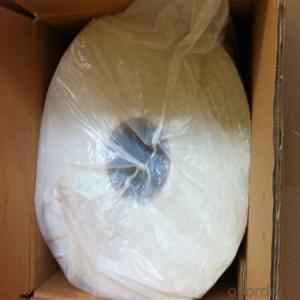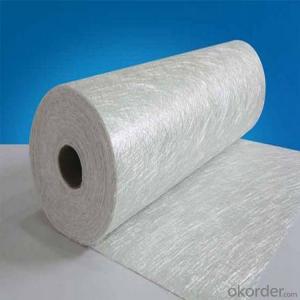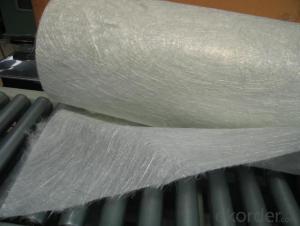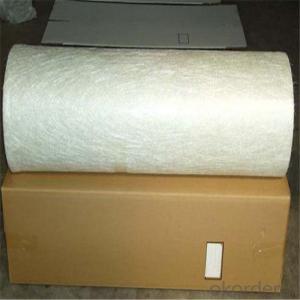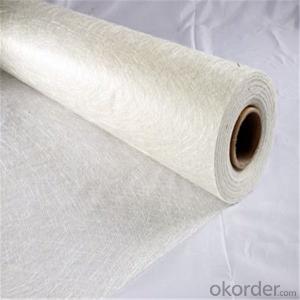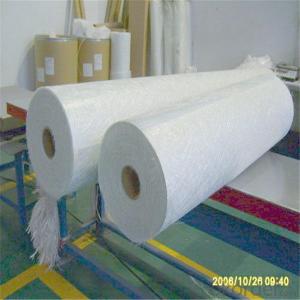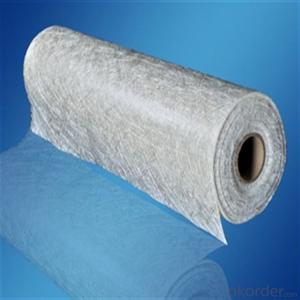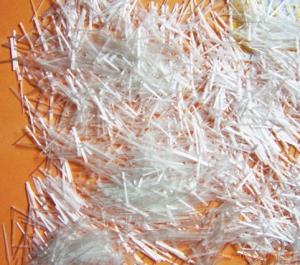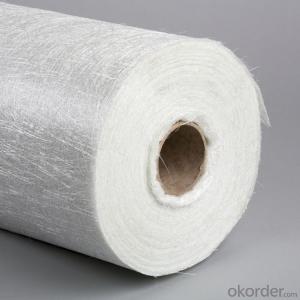Glass Fiber Chopped Strand Mat for FRP Pipe /Heated Floor Mat
- Loading Port:
- China main port
- Payment Terms:
- TT OR LC
- Min Order Qty:
- 50 kg
- Supply Capability:
- 10000 kg/month
OKorder Service Pledge
OKorder Financial Service
You Might Also Like
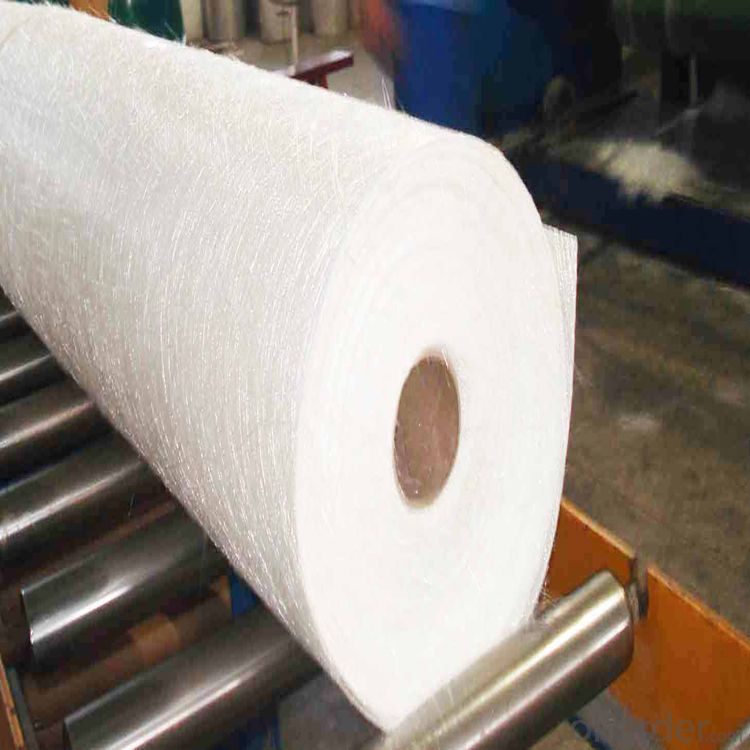
Product Description:
Chopped strand mat is made from chopped glass fibers, which are bonded with powder or emulsion binders. It can be used in hand lay-up process and continuous laminating process to produce FRP products, such as plates, lighting board, hull, bathtub, cooling towers, anti-corrosion materials, vehicles.
Features:
Uniform thickness, softness and hardness good.
Good compatibility with resin, easy completely wet-out.
Fast and consistent wet-out speed in resins and good manufacturability.
Good mechanical properties, easy cutting.
Good cover mold, suitable for modeling complex shapes.
Application:
fiberglass thickness is suitable for application by hand lay-up, reinforce and machine FRP molding,
including interior decoration of vehicles, boat hulls, complete set of sanitary equipment, anticorrosive pipes, tanks, building materials, tables, chairs, panels and all kind of composite FRP products.
Specifications:
Item | Over Density | Moisture Content | Chop Density | Polyester Yarn | Width |
(g/m2) | (%) | (g/m2) | (g/m2) | (mm) | |
EMK300 | 309.5 | ≤0.15 | 300 | 9.5 | 50-3300 |
EMK380 | 399 | 380 | 19 | ||
EMK450 | 459.5 | 450 | 9.5 | ||
EMK450 | 469 | 450 | 19 | ||
EMC0020 | 620.9 | 601.9 | 19 | ||
EMC0030 | 909.5 | 900 | 9.5 |
Special products are available according to customer’s requirement.
Product Packaging:
Each Surface Tissue is wound onto a paper tube which has an inside diameter of 76mm and the mat roll has a diameter of 330mm. The mat roll is wrapped up with plastic film,and then packed in a cardboard box or wrapped up with kraft paper. The rolls can be vertically or horizontally placed. For transportation, the rolls can be loaded into a cantainer directly or on pallets.
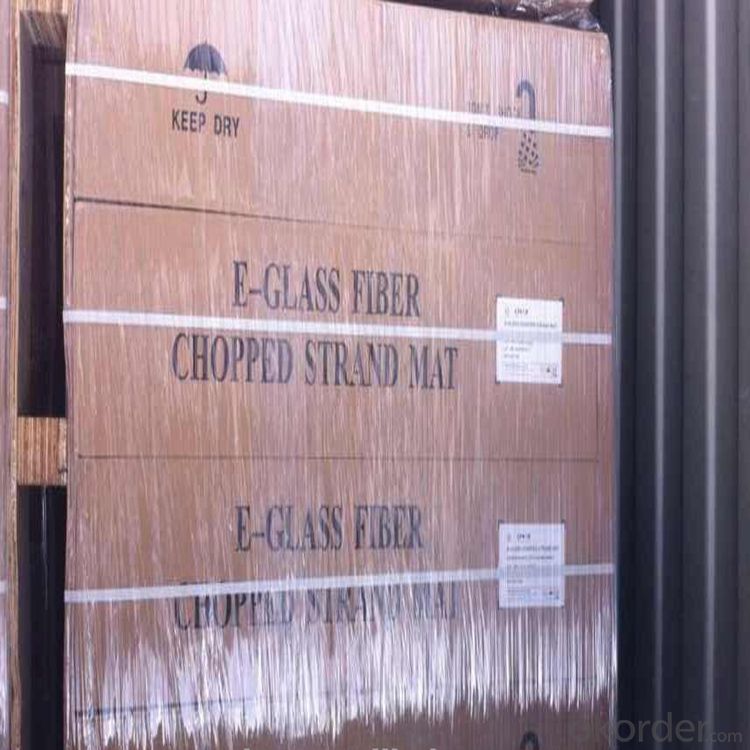
Product Storage:
Unless otherwise specified, Chopped Strand Mat should be stored in a dry, cool and rain-proof area. It is recommended that the room temperature and humidity should be always maintained at 15℃~35℃ and 50%~75% respectively.
Company Information
CNBM (China National Building Material) Group is the largest comprehensive building materials group in China that in integrate scientific research, manufacturing and logistics into one entity. The largest building materials and equipment specialists in China. Upon State Council approval, today CNBM owned more than 300 subordinate manufacturing factories and servicing companies. There are 6 fully owned public listed companies and 11 partially owned with substantial shares public listed companies. In many of these fields, CNBM is playing the leading role in the building industry in the country.

Order Information
Ordering please specify:
1. the product code, 2. weight, 3. width, 4. order quantity, 5. packaging, 6. special requirements please specify.
FAQ:
1. How long will you get reply?
Any inquiry will be replied within 24 hours. Usually we will reply within 12 hours.
2. How long is warranty period?
We provide 3 year warranty period.
3. What is your MOQ?
Any order quantity is available.
4. Can you provide sample?
Yes, samples are in stock. we can offer free sample for you.
5. Payment terms?
We can accept L/C, T/T, Western Union, Paypal etc.
6. Do you offer OEM service?
Yes, we can print customers’ logo on the packaging;
And the size and specification can be produced and design according to your demand.
7. What is the Production Lead Time?
15-20 days for bulk production after confirm the order.
- Q:What are the typical quality control measures for fiberglass chopped strand composites?
- To ensure the integrity and consistency of fiberglass chopped strand composites, various typical quality control measures are commonly employed: 1. Raw Material Inspection: The initial step involves inspecting the raw materials used in production. This includes assessing the quality and specifications of the glass fibers, resins, and additives to ensure they meet the required standards. 2. Process Control: Throughout the manufacturing process, quality control measures monitor and control parameters like temperature, pressure, and resin-to-fiber ratio. This ensures consistency and conformity to specifications. 3. Fiber Length and Distribution: The mechanical properties of the composite are influenced by the length and distribution of the chopped fibers. Quality control measures are used to measure and monitor these aspects, ensuring adherence to specified requirements. 4. Composite Thickness and Density: The performance of fiberglass chopped strand composites is impacted by their thickness and density. Quality control measures are implemented to measure and monitor these factors, ensuring compliance with required standards. 5. Mechanical Testing: Various mechanical tests evaluate the strength, stiffness, and other properties of the composites. These tests include tensile strength, flexural strength, impact resistance, and fatigue testing. Quality control measures ensure accurate and consistent testing. 6. Visual Inspection: Trained inspectors visually examine the composites for defects such as voids, delamination, or surface imperfections. This quality control measure ensures compliance with cosmetic standards. 7. Dimensional Control: Quality control measures are used to measure and monitor dimensions such as length, width, and thickness, ensuring they fall within specified tolerances. 8. Packaging and Labeling: Quality control measures extend to packaging and labeling. Inspections are conducted to ensure intact packaging that protects the composites during transportation, and accurate labeling that reflects product specifications. By implementing these quality control measures, manufacturers can deliver high-quality fiberglass chopped strand composites that meet standards for strength, durability, dimensional accuracy, and appearance. This helps maintain their reputation in the market and satisfies customer expectations.
- Q:how long is the minimum length of the chopping glass fiber?
- 5mm, 12mm, 3mm, 9mm.5mm, 6mm, 41, 24mm, etc.
- Q:How is fiberglass chopped strand measured?
- The typical measurement for fiberglass chopped strand pertains to its length. It refers to the average length of the individual glass fibers contained within the strand. This particular measurement holds significance as it directly impacts the strength and overall performance of fiberglass in a variety of applications. Depending on the intended purpose, chopped strand commonly ranges from a few millimeters to several centimeters in length. It is essential to specify this measurement in either inches or millimeters and make a careful selection based on the specific project or product requirements.
- Q:Is fiberglass chopped strand compatible with different manufacturing processes?
- Yes, fiberglass chopped strand is compatible with various manufacturing processes. It can be used in processes such as compression molding, injection molding, pultrusion, and filament winding, among others. Its versatility and ability to be easily incorporated into different manufacturing methods make it a popular choice in various industries.
- Q:How does the chopping method of fiberglass chopped strand affect its performance?
- The chopping method of fiberglass chopped strand has a significant impact on its performance. The length and consistency of the chopped strands can affect the strength, stiffness, and overall mechanical properties of the fiberglass. Properly chopped strands with consistent lengths and distribution enhance the dispersion and adhesion within the resin matrix, leading to improved mechanical properties and overall performance of the fiberglass composite.
- Q:Is fiberglass chopped strand suitable for the production of automotive spoilers?
- Indeed, fiberglass chopped strand proves to be a fitting option for the manufacturing of automotive spoilers. Widely utilized in the automotive industry for various components, including spoilers, fiberglass serves as a lightweight and long-lasting material. The chopped strand variant of fiberglass comprises short, randomly oriented fibers bound together by a binder. This configuration facilitates the effortless handling and molding of the material during the production process. Automotive spoilers, designed to enhance vehicle aerodynamics by improving stability and reducing drag, benefit from the exceptional strength-to-weight ratio offered by fiberglass chopped strand. This quality makes it an ideal choice for spoilers. The material's high tensile strength and impact resistance ensure that the spoiler can endure the forces and stresses encountered while driving. Moreover, fiberglass chopped strand can be conveniently molded into intricate shapes, enabling the production of spoilers with elaborate designs. The material can also be effortlessly painted and finished to match the vehicle's aesthetics. In conclusion, due to its lightweight nature, durability, and versatility in molding and finishing, fiberglass chopped strand emerges as a fitting material for the production of automotive spoilers.
- Q:What are the different surface treatments available for fiberglass chopped strand?
- There are several surface treatments available for fiberglass chopped strand to enhance its performance and compatibility with various materials. Some of the common surface treatments include: 1. Silane treatment: Silane is a widely used surface treatment for fiberglass chopped strand. It involves the application of a silane coupling agent onto the surface of the strands. Silane helps in improving the adhesion between the fiberglass and the matrix material, resulting in enhanced mechanical properties and durability of the composite. 2. Sizing treatment: Sizing is another surface treatment method where a protective coating is applied to the fiberglass strands. Sizing agents typically consist of a combination of lubricants, binders, and other additives. This treatment helps to protect the fibers during processing and handling, and also improves their wettability and compatibility with different resin systems. 3. Plasma treatment: Plasma treatment involves exposing the fiberglass chopped strand to a high-energy plasma gas. This treatment modifies the surface of the fibers by cleaning and activating them, resulting in improved adhesion and wetting characteristics. Plasma treatment is often used to enhance the performance of fiberglass in demanding applications. 4. Chemical treatment: Various chemical treatments can be applied to the surface of fiberglass chopped strand to modify its properties. For example, acid treatment can increase the surface roughness and remove impurities, while alkali treatment can improve the fiber's resistance to moisture and alkali degradation. 5. Coating treatment: Coating treatments involve applying a thin layer of coating onto the surface of the fiberglass strands. These coatings can be made of various materials such as polymers, metals, or ceramics. Coating treatments are often used to provide additional protection against abrasion, UV degradation, or chemical attack, and can also improve the compatibility of the fiber with specific resin systems. Overall, the choice of surface treatment for fiberglass chopped strand depends on the specific requirements of the application and the desired properties of the final composite material. The selection of the appropriate treatment plays a crucial role in optimizing the performance and durability of the composite.
- Q:Can fiberglass chopped strand be used in chemical resistant applications?
- Yes, fiberglass chopped strand can be used in chemical resistant applications. The combination of fiberglass and resin offers good resistance to a wide range of chemicals, making it suitable for various industrial and commercial applications where chemical resistance is required.
- Q:What types of resins can be used with fiberglass chopped strand?
- There are several types of resins that can be used with fiberglass chopped strand. The most commonly used resins include polyester resin, epoxy resin, and vinyl ester resin. Polyester resin is the most widely used resin for fiberglass applications due to its low cost and ease of use. It is suitable for a variety of applications including boats, automotive parts, and construction materials. Epoxy resin is known for its superior strength and excellent adhesion to various substrates, making it ideal for high-performance applications such as aerospace and marine industries. Vinyl ester resin is a hybrid between polyester and epoxy resins, offering improved corrosion resistance and toughness. It is often used in applications that require enhanced durability and chemical resistance, such as chemical storage tanks and pipes. Ultimately, the choice of resin depends on the specific requirements of the application, such as strength, durability, and chemical resistance.
- Q:How is the adhesion strength of fiberglass chopped strand composites tested?
- The adhesion strength of fiberglass chopped strand composites is typically tested using a variety of methods. One common method is the single fiber pull-out test, in which individual fibers are embedded in a matrix material and then pulled out to measure the force required for fiber detachment from the matrix. This test helps to evaluate the interfacial bond strength between the fibers and the matrix. Another method is the short-beam shear test, where a composite sample with a specific geometry is subjected to a three-point bending load. The test measures the maximum load at failure, providing information about the adhesion strength between the fibers and the matrix. In addition, the peel test can be employed to assess the adhesion strength. This test involves separating a composite laminate into layers, and then measuring the force required to peel the layers apart. It provides insights into the interfacial bond strength between the layers. Furthermore, the pull-off test can be used to determine the adhesion strength between the composite and a substrate. This involves applying a force perpendicular to the surface of the composite and measuring the maximum force required for delamination from the substrate. Overall, these testing methods allow for the evaluation of the adhesion strength of fiberglass chopped strand composites by quantifying the force required for fiber detachment, maximum load at failure, peel strength, or pull-off force. These tests help in assessing the quality and performance of the composite materials, ensuring their suitability for various applications.
1. Manufacturer Overview |
|
|---|---|
| Location | |
| Year Established | |
| Annual Output Value | |
| Main Markets | |
| Company Certifications | |
2. Manufacturer Certificates |
|
|---|---|
| a) Certification Name | |
| Range | |
| Reference | |
| Validity Period | |
3. Manufacturer Capability |
|
|---|---|
| a)Trade Capacity | |
| Nearest Port | |
| Export Percentage | |
| No.of Employees in Trade Department | |
| Language Spoken: | |
| b)Factory Information | |
| Factory Size: | |
| No. of Production Lines | |
| Contract Manufacturing | |
| Product Price Range | |
Send your message to us
Glass Fiber Chopped Strand Mat for FRP Pipe /Heated Floor Mat
- Loading Port:
- China main port
- Payment Terms:
- TT OR LC
- Min Order Qty:
- 50 kg
- Supply Capability:
- 10000 kg/month
OKorder Service Pledge
OKorder Financial Service
Similar products
New products
Hot products
Hot Searches
Related keywords
